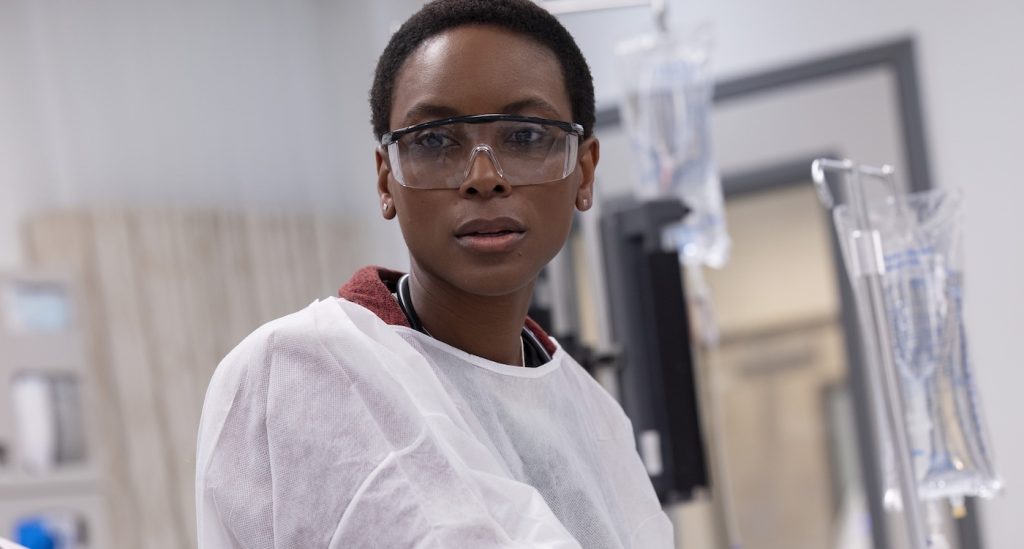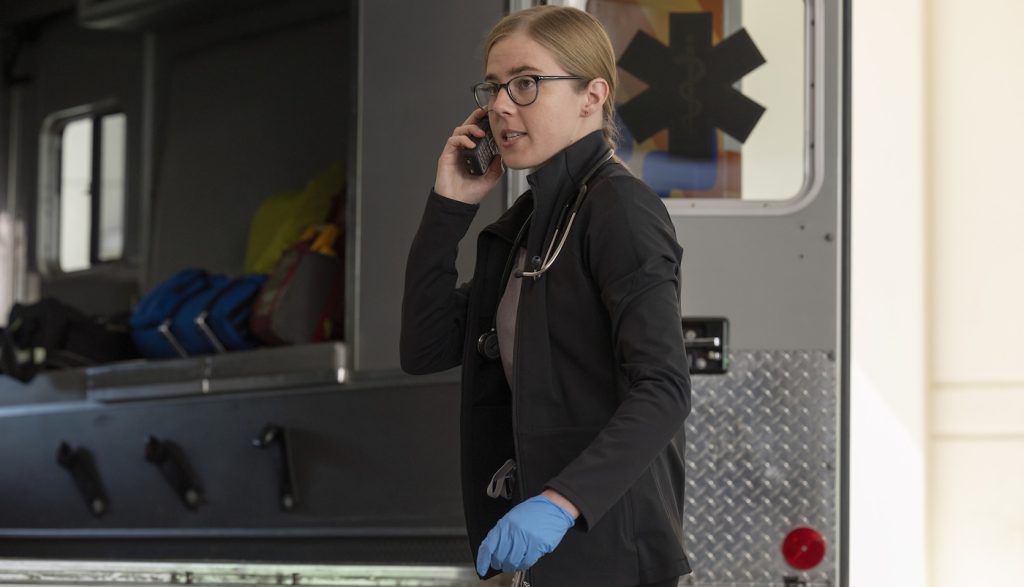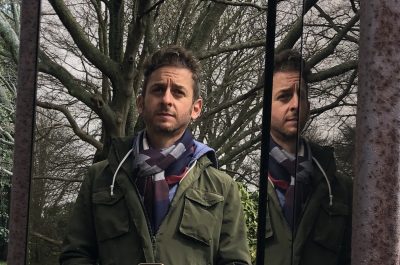“Part Debate Club and Part Therapy”: Inside “The Pitt” Writers’ Room With Cynthia Adarkwa & Valerie Chu
HBO’s The Pitt emerged as one of television’s most gripping medical dramas in years by doing something deceptively simple yet extraordinarily difficult: following a single, brutal 15-hour shift in a Pittsburgh emergency room in real time. What made the series so compelling wasn’t just its relentless intensity or unflinching medical realism (the “floating face” fracture in episode 2 will haunt my dreams), but how writers like Valerie Chu and Cynthia Adarkwa managed to weave deeply human character arcs through the chaos of trauma bays and life-or-death decisions.
Under showrunner Scott Gemmill’s guidance, the writing team created something rare in medical television—a show that honored both the technical expertise of healthcare professionals and the emotional complexity of the people wearing the scrubs. The attention to detail was aided by medical consultant Dr. Joe Sachs, who provided authentic clinical details, and Chu and Adarkwa were part of a diverse writers’ room bringing varied perspectives to each storyline. The Pitt achieved that elusive balance of unflinching verisimilitude and narrative momentum, resonating not just with general audiences but with the medical professionals whose daily reality it sought to portray.
We spoke to Chu and Adarkwa about weaving technically precise medical jargon through emotionally resonant character development to create the best medical drama on TV.
When you’re breaking stories in the writers’ room, how do you know you’re creating something special?
Valerie: I think every writer’s room is passionate about the stories they’re telling, but that doesn’t mean they’re going to take off in the world. I’ve had people ask me, “Did you know it was going to be a hit?” And honestly, I didn’t.
With this vast ensemble cast and intersecting storylines, what’s the room process like?
Cynthia: We start with broad ideas. Noah’s [Wyle] in the room with us, so he’s got real insight into Robbie’s character, so we defer to him quite often. Season one, we were working from a pilot, so we had that basis, then we zoomed out to figure out what these fifteen episodes are going to look. We start with, “Oh, what would we like to see?” and jot things down across these huge whiteboards for the shape of the overall season, then go episode by episode. That’s where we get into expert talks. Dr. Joe [Sachs] Zooms with current medical professionals, gaining insight into specific topics—autism, pediatric care, as many areas as you can imagine. We’re talking to experts daily. Then we take what they explain and fuse it into each episode.
Valerie: I don’t have experience writing medical shows, so what I found interesting is that this is a show that cares about character. We look at overarching character arcs for this season—which is funny because it’s only a single day, so you can only evolve the character so much—but Dr. Joe’s expertise, which he had on ER starting as a consultant then becoming a writer, allows us to say, “We want this character to experience this during this episode, so could you find a case where if we want it to be a failure, and this character is going through overcoming that, we want to portray them as a competent doctor, but this is a very valid slip-up that a medical student or teaching resident could have in this teaching hospital setting.” What’s cool about the show is we’re able to work together so the character isn’t lost, and we can adapt those medical cases to serve the character.
How do you write characters with extremely detailed medical knowledge that sounds realistic yet flows within the story without drowning viewers in jargon?
Cynthia: I didn’t go to medical school [laughs], so a lot of the medical jargon goes over my head, too. That specificity comes from our doctor/writer and other consultants who compile medical notes for every episode. As a writer, I write my beat-sheet outline, Dr. Joe and his colleagues take it, and say, “Here’s a trauma scene, here’s exactly what these characters would say.” Then I take that, I don’t touch the medical stuff, and add conversational tidbits between characters. In my episode [episode 6, “12:00 P.M.”], what comes to mind is a trauma scene where our surgeon fellow Garcia [Alexandra Martz] was chatting with Santos [Isa Briones], one of our interns, and she quips, “What’s your sign?” That’s something I get to add to the medical stuff.
Valerie: I want to shout out our writer’s assistant [Kirsten Pierre-Geyfman] and script coordinator [Danny Hogan], because they track patients throughout the season, and it’s really difficult because you’re moving patients in and out of rooms, and everything on this show means something. A patient who comes in during episode 1 ends up being taken back to the ER in episode 7—they’re tracking all of this. Even the writers sometimes ask to be reminded where these patients are. It’s an integral part of the show.
Cynthia: It’s especially important because of the hour-by-hour nature. We have to know where everyone is. It’s almost like we’re writing a play. Because we’re on this one set, we have to know all the moving parts, and if we didn’t, it would be chaos.

How did the incredible reception from viewers feel, especially from medical professionals?
Cynthia: It’s very cool that people connect to the show. I think it hit at a specific time where we feel let down by our government, by the medical system, so that’s another reason people are connecting with it. It’s admirable to see people do hard work. These characters are based on people who have expertise, who have been doing this for years, who have passion, and who are not necessarily making tons of money, but they love what they do. When we meet with residents, that’s when it really speaks to me. We’re representing the real side of what these people are going through. It’s not the glossy soap side—no shame to those shows, I love them too! But we see these residents having a hard time, fighting school debt, fighting burnout, so why not represent them in their totality?
Any favorite storylines or character arcs from season one?
Cynthia: One of my favorite storylines was Dr. Collins’ [Tracy Ifeachor] miscarriage story. Black maternal health is important, and there are misconceptions about fertility when it comes to Black women, and I felt like that story was important to tell. I hope women across the board felt seen in that storyline, but also Black women specifically. We deal with fertility issues at a higher rate than white women; it’s just not spoken about as much.

Valerie: The story with Terrance [Coby Bird], our autistic patient who comes in, and Mel [Taylor Dearden] does a great job with him. I’m so proud that we in the room are constantly trying to subvert tropes. There are years of mishandling of disabled representation that have perpetuated negative stereotypes, and as a room, we’re passionate about righting those wrongs. It’s really important for us to tell stories where we’re not leaning into stereotypes, but also, it’s not that they’re coming in with anything related to autism—they’re just coming in because they sprained their ankle. I’m proud that our writing staff figures out how we, as problem solvers, find the more interesting way into this.

What’s it like inside the writers’ room?
Cynthia: I feel so spoiled saying this, but it’s the dream job. We go to work to be creative, and part of that involves being in conversation with one another. Whether we’re talking about daily news stories or what happened locally in LA or what we had for dinner last night, you have those little conversations so you’re really getting to know each other, and that bleeds into these bigger conversations of what kind of stories we want to tell, what perspectives we want to show.
Valerie: I always describe a writer’s room as part debate club and part therapy—it can get very heated, but it can also be very therapeutic. We very much share our stories in this room. We’ve talked about family deaths, we’ve talked about relatives who have mental health issues, and it creates a safe space. I have to credit our showrunner, Scott [Gemmill], for allowing that, because there are showrunners who might say we shouldn’t go down these personal paths. We are very much allowed to be ourselves, bare our souls, and sometimes that comes out in the writing or the storylines. It’s a very diverse room in terms of life experiences, and credit to Scott for staffing a room like that—he wanted people who had different opinions.
The show builds to an incredibly intense shooting at the Pitt Fest. Was that always part of the plan?
Valerie: That was there from day one. I believe it was part of Scott’s initial pitch to Max, because a normal shift is 12 hours. They were like, “How are we gonna get to the 15 hours? What’s the reason for keeping our doctors in this hospital?” And also let’s speak to this national crisis of gun violence. We knew we were building to that. The interesting thing about the show is that it does feel very realistic, but it is not necessarily your typical day in an ER. Because it is for entertainment, we do add these big moments. And the shooting was our big moment for season one.
Okay, last question—you’ve broken your ankle skateboarding—which two doctors from this show do you want treating you?
Valerie: Robbie for sure. I fractured my tibial plateau right before the room for season two started in February, so six weeks on crutches. Noah Wyle was kindly pushing me in a wheelchair during that time when I had to be off my legs. So Noah and Robbie in real life—just an incredible human being. And I feel like Samira would be a kind, patient doctor.
Cynthia: I definitely echo Val with Robbie. He would just be a comfort. And then my second choice comes out of left field. I’m gonna go with Santos, because I really enjoy banter when I’m in a medical setting. Distract me from what’s happening. I feel like Santos and I would have good banter, and I know she’d be able to take care of me as well.
Featured image:Robby and team work to pinpoint Nick’s condition. (Warrick Page/MAX)



